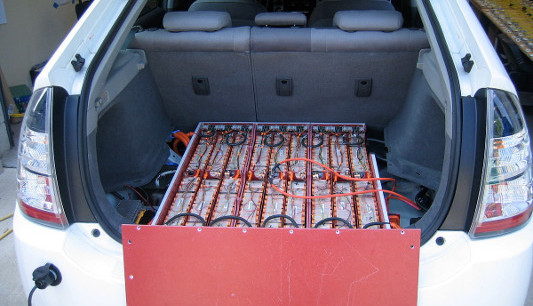Saving energy with data and algorithms
January 19, 2017
on
on

Information is everywhere but the challenge is to make good use of it. The promise of the information age is to make improvements in the material world by harnassing the immaterial. Four engineers of the University of California, Riverside (UCR) have done just that. Combining real-time data and algorithms, they were able to reduce fuel consumption of plug-in hybrid electric vehicles (PHEVs) with 10 to 30%.
Lead researcher Xuewei Qi, a postdoc at the Department of Electrical and Computer Engineering, and his colleagues developed a new energy management system (EMS) framework that optimizes the fuel economy of PHEVs. The engineers presented their findings in a paper published in the journal IEEE Transactions on Intelligent Transportation System.
Fuel efficiency
A plug-in hybrid has both an electric motor and an internal combustion engine (ICE). To save fuel it drives in all-electric mode when it can and calls on the ICE when needed. A PHEV is different from a conventional hybrid electrical vehicle in that it can be charged from an external power source. A conventional hybrid generates its electricity on board with excess energy from the engine or by capturing energy when braking.
The next step to making PHEVs even more fuel efficient is to improve the energy management system. The EMS controls the power distribution between the electric motor and the ICE. Their are a variety of EMSs out there but the simplest scheme is to start in all-electric mode until the battery is depleted and then switch to hybrid mode. However, that is not the most fuel efficient scheme. Research has shown that using both energy sources over the entirety of a journey is more efficient.
Real-time information
With their novel EMS framework Qi and his colleagues have improved fuel savings by incorporating real-time information. Feeding the EMS with up-to-date data on traffic and road conditions improves its ability to calculate the optimal use of energy.
To make the calculations the team used an evolutionary algorithm: an algorithm that uses the principles of evolution such as mutation and selection to solve a problem.
'By mathematically modeling the energy saving processes that occur in nature, scientists have created algorithms that can be used to solve optimization problems in engineering,' Qi told UCR Today. 'We combined this approach with connected vehicle technology to achieve energy savings of more than 30%.
Image: Toyota Prius Lithium-ion battery pack, with cover removed. Published by LossIsNotMore under a creative commons licence.
Lead researcher Xuewei Qi, a postdoc at the Department of Electrical and Computer Engineering, and his colleagues developed a new energy management system (EMS) framework that optimizes the fuel economy of PHEVs. The engineers presented their findings in a paper published in the journal IEEE Transactions on Intelligent Transportation System.
Fuel efficiency
A plug-in hybrid has both an electric motor and an internal combustion engine (ICE). To save fuel it drives in all-electric mode when it can and calls on the ICE when needed. A PHEV is different from a conventional hybrid electrical vehicle in that it can be charged from an external power source. A conventional hybrid generates its electricity on board with excess energy from the engine or by capturing energy when braking.
The next step to making PHEVs even more fuel efficient is to improve the energy management system. The EMS controls the power distribution between the electric motor and the ICE. Their are a variety of EMSs out there but the simplest scheme is to start in all-electric mode until the battery is depleted and then switch to hybrid mode. However, that is not the most fuel efficient scheme. Research has shown that using both energy sources over the entirety of a journey is more efficient.
Real-time information
With their novel EMS framework Qi and his colleagues have improved fuel savings by incorporating real-time information. Feeding the EMS with up-to-date data on traffic and road conditions improves its ability to calculate the optimal use of energy.
To make the calculations the team used an evolutionary algorithm: an algorithm that uses the principles of evolution such as mutation and selection to solve a problem.
'By mathematically modeling the energy saving processes that occur in nature, scientists have created algorithms that can be used to solve optimization problems in engineering,' Qi told UCR Today. 'We combined this approach with connected vehicle technology to achieve energy savings of more than 30%.
Image: Toyota Prius Lithium-ion battery pack, with cover removed. Published by LossIsNotMore under a creative commons licence.
Read full article
Hide full article


Discussion (1 comment)